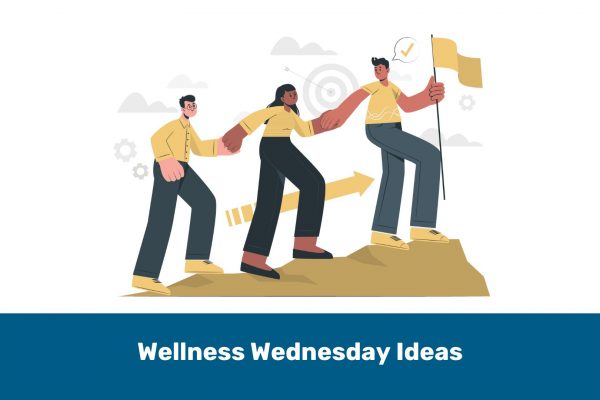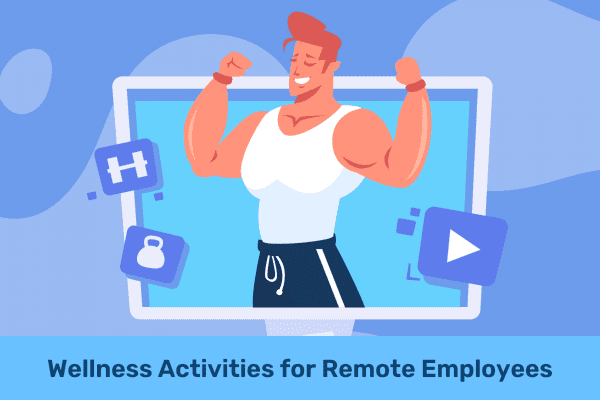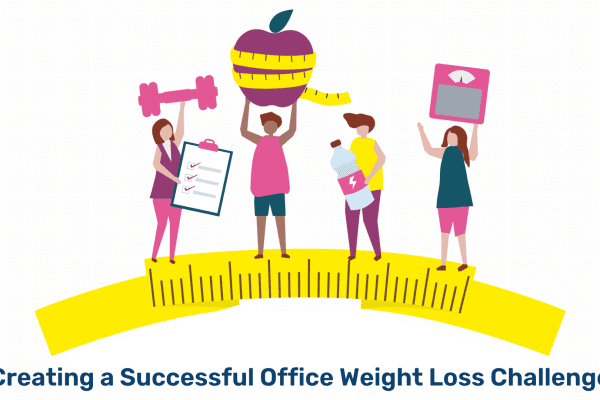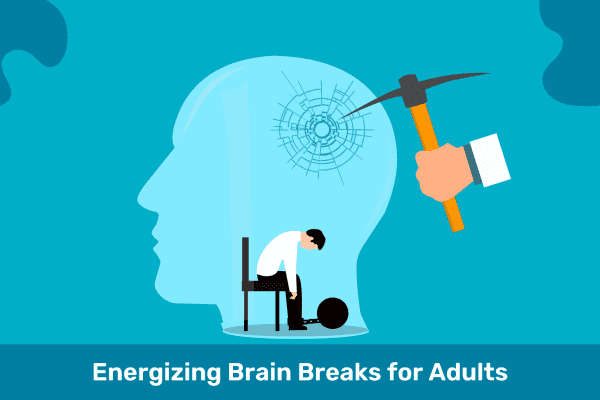Introduction
In today’s corporate culture, prioritizing employee well-being has become an essential aspect of fostering a healthy and thriving organizational culture. Workplace wellness challenges play a pivotal role in promoting a holistic approach to health, encompassing physical, mental, and emotional well-being. As organizations recognize the direct correlation between employee wellness and overall productivity, the implementation of impactful wellness challenges has gained prominence.
The Importance of Workplace Wellness Challenges:
Workplace wellness challenges are structured initiatives designed to engage employees in activities that enhance their physical health, mental resilience, and overall quality of life. These challenges go beyond traditional health and safety programs, incorporating diverse activities that encourage teamwork, stress management, and the adoption of healthy lifestyle habits.
The State of Workplace Wellness:
As organizations navigate the evolving landscape of employee well-being, statistics underscore the significance of workplace wellness programs:
-
- Improved Productivity: According to a study by the World Health Organization (WHO), workplaces that invest in employee health and well-being experience a 25% increase in overall productivity.
-
- Reduced Absenteeism: The Centers for Disease Control and Prevention (CDC) estimates that businesses lose approximately $225.8 billion annually due to absenteeism related to poor employee health. Workplace wellness programs have been shown to reduce absenteeism by as much as 27%.
-
- Enhanced Employee Engagement: A Gallup study found that employees who are engaged in workplace wellness programs are 17% more likely to be engaged in their work.
-
- Positive Impact on Company Culture: Organizations with a strong commitment to workplace wellness witness an improvement in company culture. A survey conducted by Harvard Business Review found that 61% of employees believe that a positive workplace culture is important for their overall job satisfaction.
The Road Ahead:
While these statistics highlight the benefits of workplace wellness challenges, the road ahead involves the continuous evolution of these programs to meet the changing needs of a diverse workforce. This includes addressing the challenges posed by remote work, promoting inclusivity, and staying attuned to emerging trends in well-being.
In this context, the following exploration will delve into 12 transformative workplace wellness challenges designed to make a lasting impact on employee health and organizational success. These challenges aim to promote a culture of well-being, ultimately contributing to a more engaged, resilient, and productive workforce.
12 Ideal Workplace Wellness Challenges for an Impactful Year
Month 1: Mindful Mornings

In the pursuit of holistic well-being, the inaugural month of our workplace wellness challenges embarks on a journey centered around cultivating mindfulness. Aptly titled “Mindful Mornings,” this month-long initiative aims to empower employees to start their days with intention, focus, and a heightened awareness of the present moment.
5 Daily Mindfulness Exercises:
-
- Breath Awareness Meditation: Encourage participants to start their day with a brief meditation focusing on their breath. Inhaling and exhaling mindfully can center individuals and create a calm mindset for the day ahead.
-
- Body Scan Exercise: Guide participants through a body scan meditation, encouraging them to pay attention to each part of their body, releasing tension and promoting a sense of relaxation.
-
- Mindful Stretching Routine: Incorporate gentle stretching exercises into the morning routine to enhance physical well-being and promote mindful movement.
-
- Focused Listening Exercise: Encourage individuals to engage in active and mindful listening during their morning interactions, whether in-person or virtual. This helps in better communication and strengthens interpersonal connections.
Tracking Progress and Sharing Experiences:
-
- Provide participants with a mindfulness journal to track their daily experiences, thoughts, and reflections. This serves as a personal record of their mindfulness journey.
-
- Utilize a dedicated online platform or mobile app where participants can log their daily mindfulness activities, share insights, and engage in discussions with colleagues.
-
- Host virtual or in-person weekly check-ins to discuss challenges, successes, and experiences. This promotes a sense of community and support among participants.
Month 2: Hydration Harmony

The Hydration challenge for the second month focuses on the vital role of proper hydration in fostering a healthier workplace. Water, often overlooked, is a cornerstone of well-being, impacting physical health, mental clarity, and overall productivity. This challenge encourages employees to embrace a mindful approach to hydration, fostering habits that will contribute to sustained well-being.
1st Week: Setting the Stage
-
-
- Understanding the Importance of Hydration
- Exploring the impact of dehydration on cognitive function and energy levels.
- Sharing research-backed insights on the role of water in overall health.
- Understanding the Importance of Hydration
-
-
-
- Personalized Hydration Goals
- Encouraging employees to calculate their daily water intake needs based on individual factors.
- Providing tools or apps to help track and monitor water consumption.
- Personalized Hydration Goals
-
2nd Week: Hydration Habit Formation
-
-
- Creative Hydration Stations
- Introducing hydration stations in the workplace with infused water, encouraging variety.
- Sharing DIY recipes for flavored water to make hydration enjoyable.
- Creative Hydration Stations
-
-
-
- Daily Hydration Challenges
- Implementing daily challenges to meet specific water intake targets.
- Recognizing and rewarding participants for consistent hydration.
- Daily Hydration Challenges
-
3rd Week: The Science of Hydration
-
-
- Interactive Workshops
- Hosting workshops or webinars with health professionals to discuss the science of hydration.
- Q&A sessions to address common myths and misconceptions about water intake.
- Interactive Workshops
-
-
-
- Hydration-friendly Policies
- Encouraging employers to adopt policies that support regular breaks for water consumption.
- Providing reusable water bottles as company swag.
- Hydration-friendly Policies
-
4th Week: Celebrating Hydration Success
-
-
- Hydration Check-ins
- Conducting team check-ins to share successes and challenges.
- Creating a supportive environment for open discussions about hydration habits.
- Hydration Check-ins
-
-
-
- Recognition and Rewards
- Acknowledging and celebrating individual and team achievements.
- Offering incentives or recognition for sustained improvements in hydration habits.
- Recognition and Rewards
-
Month 3: Move It March

As organizations strive to create a workplace culture that prioritizes employee well-being, “Move It March” emerges as a transformative initiative aimed at promoting physical health and vitality among employees. This month-long workplace wellness challenge is designed to inspire a more active and energized workforce, recognizing the profound impact of regular physical activity on both physical and mental well-being.
Activities and Initiatives:
-
- Daily Movement Challenges: Employers can introduce daily challenges that encourage short bursts of physical activity. This could include activities like a mid-morning stretch, a quick office yoga session, or a walking challenge to accumulate steps throughout the day.
-
- Fitness Classes and Workshops: Arrange for fitness classes or workshops, either in-person or virtually, covering a variety of activities such as aerobics, dance, or strength training. This provides employees with the opportunity to explore different forms of exercise and find activities they enjoy.
-
- Team-based Competitions: Create a sense of camaraderie by organizing team-based physical activity competitions. Whether it’s a step challenge, a friendly sports tournament, or group fitness goals, these initiatives not only promote movement but also strengthen team bonds.
-
- Educational Sessions: Offer informational sessions on the importance of regular physical activity, its impact on health, and practical tips for incorporating movement into a sedentary work routine. Knowledge empowers employees to make informed choices about their well-being.
-
- Flexible Work Arrangements: Encourage flexible work arrangements that facilitate physical activity. This could include flexible break times to accommodate short walks, the option of standing desks, or scheduled wellness breaks during the workday.
Month 4: Nutrition Nourishment

In the fourth month of our transformative workplace wellness challenges, we shift the focus to “Nutrition Nourishment” – a month dedicated to promoting healthy eating habits and providing employees with the tools they need to make nutritious choices for sustained well-being.
Activities:
Healthy Eating Challenges:
-
- Encourage employees to participate in weekly healthy eating challenges, such as incorporating more fruits and vegetables into their meals, trying new whole grains, or reducing added sugars.
- Provide a platform for employees to share their healthy recipes and meal ideas, giving a sense of community and shared commitment to nutritious choices.
Also Read: Healthy Food Swaps
Educational Workshops:
-
- Organize workshops led by nutrition experts to provide valuable insights into the importance of various nutrients, portion control, and balanced eating.
- Offer guidance on reading food labels, debunking myths, and making informed choices when dining out or ordering takeout.
Office Nutrition Resources:
-
- Create a designated space in the workplace with informative posters, pamphlets, and resources on nutrition.
- Collaborate with local nutritionists or dietitians to offer on-site consultations or virtual sessions for personalized advice.
Read Further: Office Breakfast Ideas
Nutrition Challenges Teams:
-
- Create teams within the organization, encouraging friendly competition around nutrition-related challenges.
- Teams can collaborate on creating and sharing nutritious meals, tracking their progress, and earning rewards for achievements.
Wellness Lunch-and-Learns:
-
- Organize lunchtime seminars where employees can enjoy a healthy meal while learning about various nutrition topics.
- Invite guest speakers, such as nutritionists or chefs, to share practical tips and answer questions.
Supportive Employer Actions:
-
- Subsidized Healthy Options: Work with local eateries or catering services to provide subsidized healthy meal options for employees, promoting nutritious choices during work hours.
-
- Flexible Breaks: Encourage a culture that allows employees to take breaks and enjoy their meals mindfully. This may involve flexible lunch hours or creating comfortable break areas.
-
- Employee Assistance Programs (EAPs): Highlight the availability of Employee Assistance Programs that offer counseling and support for individuals dealing with emotional eating, stress-related dietary challenges, or other nutrition-related concerns.
-
- Incentives for Participation: Implement incentives for active participation in this challenge, such as recognition, wellness-related rewards, or even a healthy cooking class for the winning team.
Month 5: Digital Detox

In the age of constant connectivity, where digital devices are ubiquitous, digital detox challenge focuses on promoting a healthier relationship with technology and creating a balanced work-life dynamic. The objective is to help employees recognize the impact of excessive screen time on their well-being and encourage mindful usage of digital devices.
Technology-Free Zones:
-
- Designate specific areas within the workplace where employees are encouraged to take breaks without using digital devices.
- Create comfortable and inviting spaces that facilitate face-to-face interactions and relaxation.
Email and Notification Management:
-
- Encourage employees to set specific times for checking emails and messages to avoid constant disruptions throughout the day.
- Provide guidelines on effective email and notification management to reduce stress and enhance focus.
Offline Team-building Activities:
-
- Organize team-building activities that don’t involve digital devices, promoting stronger interpersonal connections among team members.
- Outdoor events, board games, or group exercises can provide a refreshing break from technology.
Mindfulness and Meditation Sessions:
-
- Introduce mindfulness and meditation sessions to help employees disconnect from digital distractions and reconnect with their inner selves.
- Provide resources such as meditation apps or guided sessions to support employees in building a mindfulness practice.
Flexible Work Hours:
-
- Offer flexible work hours or “focus time” during which employees can work without the expectation of immediate responses to emails or messages.
- Empower employees to manage their time effectively and prioritize tasks without feeling overwhelmed by constant digital demands.
Encourage Outdoor Breaks:
-
- Promote the importance of taking breaks outside the office environment.
- Suggest short walks, outdoor lunches, or simply spending time in nature to refresh the mind and reduce screen fatigue.
-
- Introduce a challenge where employees voluntarily commit to reducing their screen time during non-working hours.
- Recognize and reward participants who successfully complete the challenge, fostering a sense of accomplishment.
Month 6: Gratitude Journaling

Cultivating a sense of gratitude is a powerful practice that can significantly contribute to employee well-being and workplace positivity. Gratitude Journaling encourages employees to embrace daily reflections on the positive aspects of their lives, fostering a mindset of appreciation that extends into the workplace.
Employer’s Role:
- Provide Gratitude Journals: Employers can kick off the challenge by providing personalized gratitude journals to each employee. These journals can be customized with the company logo and a brief message encouraging the practice of gratitude.
- Facilitate Workshops on Gratitude: Arrange workshops or webinars led by experts in positive psychology to educate employees on the science behind gratitude and its impact on mental well-being. These sessions can provide practical tips on effective gratitude journaling.
- Create a Shared Platform: Establish a digital platform or designated space where employees can share their gratitude journal entries. This could be a dedicated channel on the company’s internal communication platform, fostering a sense of community and mutual support.
- Recognition Programs: Integrate gratitude into existing recognition programs. Encourage employees to express gratitude for their colleagues’ efforts, and recognize outstanding contributions publicly. This reinforces a culture of appreciation within the organization.
- Regular Check-ins: Throughout the month, schedule regular check-ins or feedback sessions to understand employees’ experiences with the gratitude journaling challenge. This provides an opportunity to address any concerns and gather insights for future well-being initiatives.
Month 7: Sleep Wellness
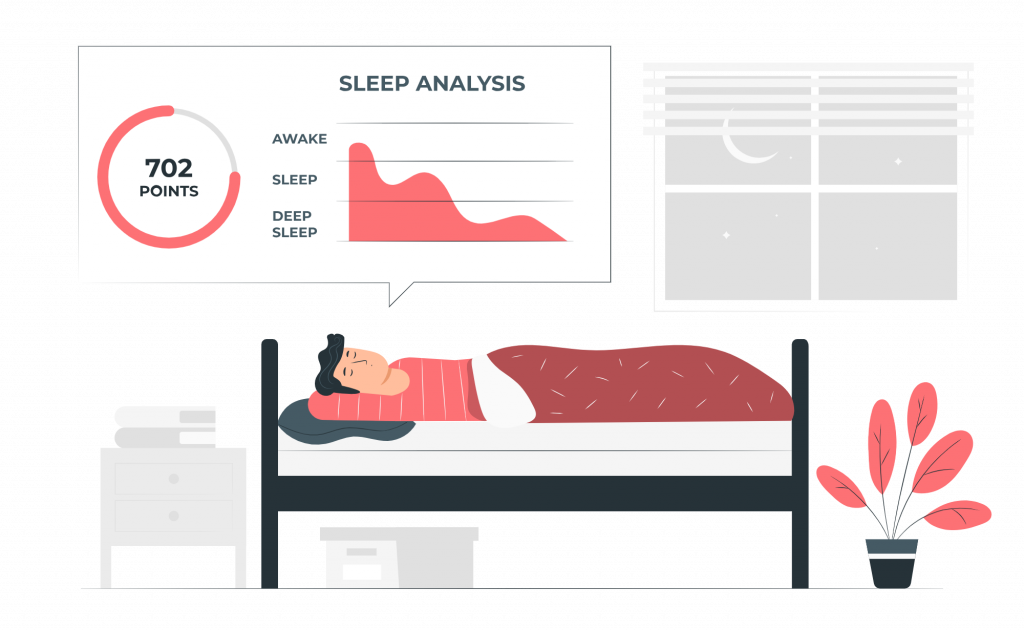
As organizations increasingly recognize the pivotal role of sleep in overall well-being and productivity, dedicating a month to “Sleep Wellness” can significantly benefit both employees and the company.
Key Activities:
-
- Host workshops or webinars led by sleep experts to educate employees on the science of sleep, its impact on overall health, and the connection between sleep and workplace performance.
-
- Introduce weekly challenges that encourage employees to adopt positive sleep hygiene practices. Challenges may include establishing a consistent sleep schedule, creating a relaxing bedtime routine, and minimizing screen time before sleep.
-
- Explore the possibility of offering flexible work schedules to accommodate diverse sleep patterns. Providing options for adjusted start times or compressed workweeks can empower employees to align their work schedules with their natural sleep rhythms.
-
- Evaluate and enhance the ergonomic features of the workplace to support employees in achieving better sleep. This may include providing comfortable seating, adjustable lighting, and quiet areas for relaxation.
-
- Share guidelines on responsible technology use, emphasizing the importance of unplugging from electronic devices at least 30 minutes before bedtime. Encourage employees to create a technology-free zone in their bedrooms.
-
- Integrate wellness apps or platforms that track and analyze sleep patterns. These tools can provide personalized insights and suggestions for improving sleep quality, empowering employees to take an active role in their well-being.
-
- Promote the importance of taking short breaks during the workday to prevent burnout and enhance overall focus. Short walks or mindfulness breaks can contribute to stress reduction and better sleep.
-
- Encourage managers to have open conversations with their teams about the importance of sleep. Foster a culture where employees feel comfortable discussing their sleep needs and seeking support when necessary.
Month 8: Financial Fitness

Recognizing that financial stress can significantly impact an individual’s overall health and job performance, this month’s challenge aims to empower employees with the tools and knowledge needed to achieve financial well-being.
-
- Budgeting Challenges: To instill practical financial habits, participants will engage in budgeting challenges tailored to their individual needs. These challenges may include tracking daily expenses, setting realistic spending limits, and identifying areas for potential savings. The goal is to foster a sense of financial responsibility and control.
-
- Goal Setting for Financial Wellness: Employees will be encouraged to set short-term and long-term financial goals. Whether it’s creating an emergency fund, paying off debts, or investing for the future, this challenge aims to empower individuals to take proactive steps towards achieving their financial objectives. Goal-setting workshops and personalized consultations may be offered to guide employees in the process.
-
- Open Discussions and Q&A Sessions: Facilitate open discussions about financial well-being, creating a supportive environment where employees feel comfortable sharing their financial concerns and aspirations. Q&A sessions with financial experts or advisors can be organized to address specific queries and provide tailored advice.
-
- Employee Benefits Education: Provide comprehensive information about available employee benefits, including retirement plans, health savings accounts (HSAs), and other financial perks. Clear communication about these benefits ensures that employees can maximize their financial resources and take advantage of the tools offered by the organization.
-
- Promoting Financial Wellness Tools: Employers can introduce or enhance existing financial wellness tools and resources. This may include access to financial planning apps, online courses, or partnerships with financial institutions to offer exclusive benefits to employees. The goal is to provide accessible and user-friendly tools that support ongoing financial well-being.
Read Further: Employee Financial Wellness Strategies
Month 9: Stress Less September

September marks the onset of fall, and as the seasons change, so do the demands and stressors in the workplace. Recognizing the importance of mental well-being, “Stress Less September” is a month-long workplace wellness challenge dedicated to helping employees manage stress, build resilience, and have a positive mindset.
-
- Understanding Stress in the Workplace: Employers should initiate the challenge by conducting workshops or webinars focused on stress awareness. This educational component aims to help employees recognize the sources of stress in their professional lives, understand its impact on mental health, and identify effective coping mechanisms.
-
- Implementing Stress-Relief Challenges and Techniques: Throughout the month, employers can organize stress-relief challenges and activities that encourage employees to engage in relaxation techniques. This could include mindfulness sessions, guided meditation, deep-breathing exercises, or yoga classes. Offering flexibility in participation allows employees to choose activities that resonate with them personally.
-
- Creating a Supportive Environment: Employers should foster a workplace culture that prioritizes open communication and support. Encourage team discussions about stress management, share personal experiences, and promote a sense of community. Creating a safe space for employees to express their feelings and seek help if needed is crucial in reducing the stigma associated with stress.
-
- Promoting Work-Life Balance: One of the major contributors to workplace stress is an imbalance between professional and personal life. This may involve implementing policies that support flexible working hours, encouraging employees to take breaks, and discouraging after-hours emails or calls.
-
- Providing Resources for Mental Health Support: Employers should ensure that employees are aware of available mental health resources. This may include Employee Assistance Programs (EAPs), counseling services, or access to mental health professionals. Communicate the availability of these resources and emphasize the organization’s commitment to supporting the mental well-being of its workforce.
Month 10: Community Connection

Recognizing the profound impact of a connected and supportive community on employee well-being, Employee connection aims to strengthen bonds among colleagues, enhance teamwork, and promote a shared sense of purpose.
Activities:
- Team-building exercises: Organize team-building activities that promote communication, trust, and collaboration. This could include offsite events, virtual team-building games, or group challenges that encourage employees to work together towards a common goal.
- Peer recognition programs: Implement a peer recognition program where employees can acknowledge and appreciate the efforts of their colleagues. This not only boosts morale but also strengthens the sense of camaraderie among team members.
- Cross-functional collaboration: Encourage collaboration between different departments or teams that may not typically work closely together. This can foster a broader sense of community within the organization and provide employees with a more comprehensive understanding of the company’s functions.
- Community service initiatives: Organize volunteer opportunities or community service projects that allow employees to give back to the local community. This not only promotes a sense of social responsibility but also creates a positive image of the organization in the community.
Month 11: Learning for Life

In the penultimate month of our transformative workplace wellness journey, we turn our focus to continuous learning and personal development. Recognizing that learning is a lifelong endeavor, this month’s wellness challenge encourages employers to foster a culture of curiosity, growth, and skill enhancement among their workforce.
Implementation Strategies:
Learning Platforms and Resources:
-
- Invest in online learning platforms or partnerships with educational institutions to provide employees with a variety of learning resources.
- Ensure easy access to a diverse range of courses, covering both professional and personal development topics.
Designated Learning Hours:
-
- Allocate specific times during the workweek dedicated to learning activities.
- Create a supportive environment where employees feel encouraged to take the time to invest in their personal and professional growth.
Mentorship Programs:
-
- Establish mentorship programs within the organization, pairing experienced employees with those seeking guidance and learning opportunities.
- Encourage knowledge exchange and the transfer of skills between different levels of the workforce.
Benefits for Employers:
Enhanced Employee Engagement:
-
- Investing in continuous learning demonstrates a commitment to employee growth and development, leading to increased engagement and job satisfaction.
Adaptability and Innovation:
-
- A learning-focused culture fosters adaptability, equipping employees with the skills needed to navigate an ever-changing work landscape and contribute to innovative solutions.
Talent Retention:
-
- Providing opportunities for continuous learning can attract and retain top talent, as employees appreciate organizations that invest in their professional development.
Month 12: Reflect and Renew

This month serves as a crucial period of self-reflection and collective renewal, fostering a sense of accomplishment and laying the groundwork for sustained well-being.
Activities:
Year-End Reflection Sessions:
-
- Host facilitated sessions where employees can reflect on their personal and professional growth throughout the year.
- Encourage open discussions about challenges, successes, and lessons learned.
- Provide prompts or guided exercises to help employees articulate their achievements and areas for improvement.
Goal Setting Workshops:
-
- Facilitate workshops to guide employees in setting well-being goals for the upcoming year.
- Emphasize the SMART (Specific, Measurable, Achievable, Relevant, Time-bound) criteria for effective goal setting.
- Encourage employees to consider both short-term and long-term well-being objectives.
Celebration and Recognition:
-
- Acknowledge and celebrate individual and team accomplishments related to wellness challenges throughout the year.
- Consider awards or recognition ceremonies to appreciate employees who actively participated and demonstrated commitment.
- Share success stories and testimonials to inspire others.
Gratitude Practices:
-
- Introduce gratitude exercises to foster a positive mindset.
- Encourage employees to express gratitude for colleagues, mentors, or positive experiences within the workplace.
- Consider creating a gratitude wall or platform where employees can share their expressions of gratitude.
Vision Board Creation:
-
- Provide materials for employees to create vision boards that represent their aspirations and well-being goals for the future.
- Facilitate a collaborative and creative atmosphere, allowing employees to share their vision boards with one another.
Conclusion
Workplace wellness challenges are not merely initiatives; they are transformative journeys that empower employees to prioritize their well-being, fostering healthier, happier, and more engaged individuals. The impact of these challenges goes beyond the workplace, contributing to a positive organizational culture and heightened productivity. As we’ve explored 12 months of impactful wellness challenges, it’s evident that investing in employee well-being is a strategic move with far-reaching benefits.
For organizations seeking an ideal platform to initiate and manage impactful wellness challenges, Woliba stands as the perfect fit. With its user-friendly interface, comprehensive features, and customizable options, Woliba empowers employers to seamlessly launch, monitor, and evaluate diverse well-being initiatives. From tracking progress to fostering a sense of community, Woliba offers a centralized solution to elevate the effectiveness of workplace wellness challenges.
Contact us today to embark on a journey toward a healthier, happier, and more engaged workforce. Together, let’s prioritize well-being and transform your workplace into a hub of sustained vitality and success.

